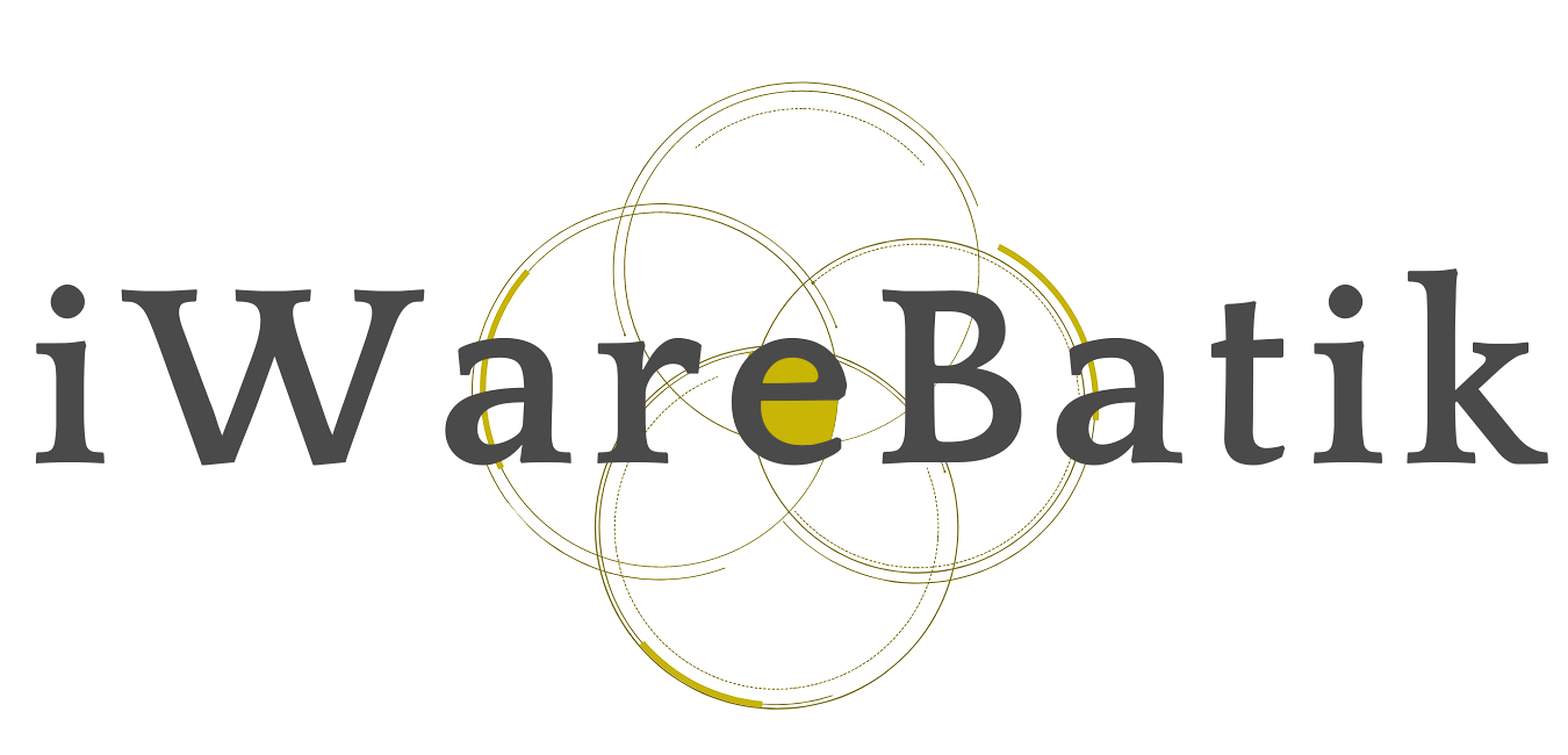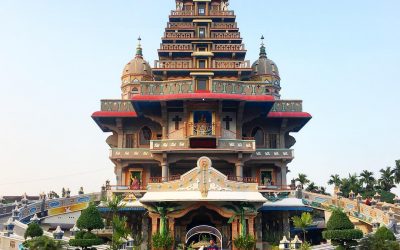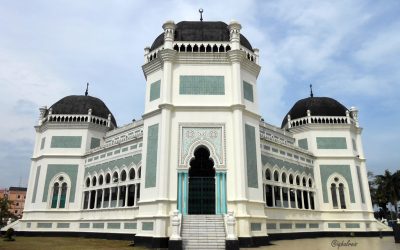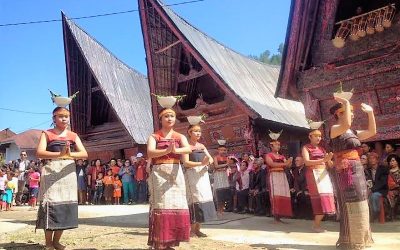Home / Batik Regions – Western Indonesia – Northern Sumatra – North Sumatra / Floating Batak House at Toba Lake
Cultural Destination
Embrace the spirit of the place!
Floating Batak House at Toba Lake
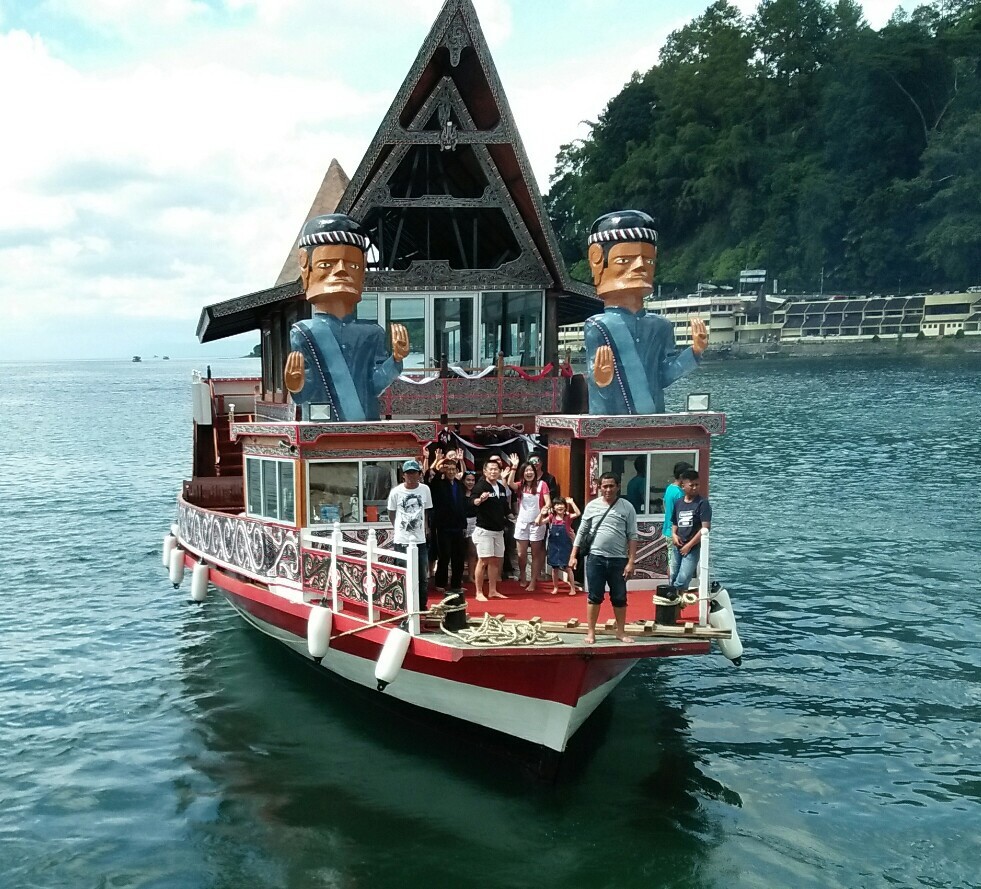
The floating Batak House (photo: Ministry of Tourism)
Floating Batak House at Toba Lake
When visiting Prapatan Beach, don’t miss the boat tours that adopt the concept of floating Batak house. With this boat, tourists can enjoy the beauty of Lake Toba and Samosir Island while learning the local customs. The floating vaganza is also equipped with fast-connected wifi and other VIP meeting facilities. Want to have a leisure meeting in a cultural scenic view? Bon Voyage!
Tourist Attractions in North Sumatra
Maria Annai Velangkani Catholic Church
The unique church building was made for and by Catholics of Tamil Indian descendants in
Al Mashun Historical Mosque of Medan
This mosque was built during the reign of Sultan Ma’mun Alrasyid Perkasa Alam in
Samosir Island – Toba Lake
This place is an ancient village that exudes a unique culture of the Batak ethnic group
North Sumatra
Batik Motifs
Desa Na Tolu
The Desa Na Tolu characteristic pattern symbolizes the Batak philosophy of existence and
Gorga Simeol-Meol
The Gorga Simeol-meol is a pattern of plant tendrils. it is regarded as a symbol of longevity and
Discover
Indonesian
Batik
Motifs
Tubo Kelapa
Coconut tree is a symbol of a good character and strong mentality. It illustrates the more success a person, the more
Bultiya
The word ‘Bultiya’ is an acronym of the three major tribes in North Kalimantan, namely
Kaharingan
The Kaharingan or ‘tree of life’ based on the Dayak tribes’ belief system. This tree symbolizes
Buketan Bali
The Balinese bouquet (Buketan Bali) is a floral arrangement and the name is
Pala Salawaku
This motif illustrates the unique weapons of the Maluku region, namely
Cengkeh
The clove flower motif is the main commodity of the Tolitoli Regency. This motif represents
Awan Berarak
Awan Berarak is a combination of Dayak motifs and Malay patterns. The word ‘Awan Berarak’ means the
Sido Mulyo
Sidomulyo is one of the classical motifs, which is specifically used for the bride’s costume in
Lontara
The Lontara script itself is a typical ancient script of Bugis and Makassar communities. History records that
Kerawang Tegak Aceh
The Vertical Upright (Kerawang Tegak) Motif symbolizes a person who has a strong
Tengkawang Ampiek
With its many advantages, the Dayaks use this leaf in ritual ceremonies. This plant is a symbol of
Karawo Pinang
Pinang refers to the Palm areca tree. This motif is considered as the original
Malinau Cultural Festival
You will witness a unique competition that might not be found other than in
Dayak Taghol
Dayak Taghol has a distinctive style of four curved lines and small dots. This motif represents
Ikan tambal
The word “Ikan” refers to fish. The philosophical meaning of Ikan Tambal means is
Gorga Simeol-Meol
The Gorga Simeol-meol is a pattern of plant tendrils. it is regarded as a symbol of longevity and
Jupri Kembang Teh
Kembang Teh illustrates the tendrils of tea plants that grow in the highlands of
Srimanganti
The name of the Srimanganti motif is derived from Palace’s hallway that connects to
Gentala Arasy
Built as high as 80 meters, the tower also highlights the historical side of
Tabir Tanjung
Tanjung flower is a type of Cherry tree flower, which is commonly found in
Tifa Totobuang
The batik motifs illustrate Maluku’s traditional music instrument called
Gonggong Siput
Gonggong (Strombus Turturella) is one type of sea snail found around
Besurek Rembulan
This batik illustrates praise for God who created the wonderful universe
Pucuk Rebung Riau
Pucuk Rebung symbolizes heart determination in achieving goals, good luck, and
Daun Sirih
This motif illustrates betel leaves that are used by Lombok communities as traditional
Gumin Tambun
Based on Hindu mythology, this motif symbolizes lucks, abundant wealth, and
Wakatobi
It symbolizes the coastal beauty of the Wakatobi island and the symbol of Patra symbolizes
Bale Lumbu
This motif signifies the welfare of the ancient Sasak society. Bale also symbolizes the
Parang Seling
Parang Seling or “alternating daggers” is a royal batik motif. It is a feminine variant of
La Galigo
La Galigo is a literary work of the Buginese Epic that has 300 thousand epic lines. It is considered even
Raja Ampat
Raja Ampat motif represents the marine life at Raja Ampat archipelago in
Sandeq
Sandeq Boat is a symbol of the maritime importance of the West Sulawesi region. The greatness of
Gonggong Beruntun
This motif illustrates that a person should maintain a positive attitude and
Lipaq Sabe
Lipaq Saqbe contains a simple geometric classical motif with various flower decorations. This textile is
Lok Baintan Floating Market
As you can imagine, the most authentic thing is that you can buy things and even
Parang Rusak
Another meaning behind this motif is an unconquerable spirit, symbolized by
Burung Bidadari
Bidadari birds are endemic birds in Halmahera. This motif represents an
Pati-Pati Pinehiku
It symbolizes the hierarchy in society and the social status of the Mekongga
Tenun Bima
The motifs are adopted from Bima woven textile. This pattern has received a great
Biji Kopi
The coffee seeds motif illustrates the pride of local coffee specialities in
Enggang Dayak
Local people beliefs that hornbills are an incarnation of the Commander of the Birds. It has supernatural
Bintik Tujuh
The Bintik Tujuh (Seven Dots) motif has 7 white spots and green color gradation as
Kaganga Tanah Rejang
If Batik Besurek combines Arabic calligraphy motifs, then the Kaganga batik takes
Gurdo Solo
Gurdo or garuda bird is the mount of the Indian god Vishnu. As the Sun Bird,
Kawung
The Kawung motif was created by Sultan Agung Hanyokrokusumo (1593 – 1645) as a symbolic gift for
Kain Cual
Cual textile tradition has existed since the 17th century. The word “Cual” refers to
Pattimura
Pattimura is the name of an Indonesian hero who fought against colonialism in
Bomba Mawar
This motif means sacred love for family, kingdom, and God; It also illustrates
Daun Simpor
This motif is inspired by the Simpor plant (Dillenia Suffruticosa) which is a typical
Singayaksa
The Singayaksa motif comes from the name of a place where Sultan Hasanuddin used to
Tanah Liek
The word “Tanah Liek” refers to clay in Minang language. It is also known as
Prada Papua
The word “Prada” in the Javanese-Indonesian dialect means a batik textile that
Paqbarre Allo
The word “Barre” means round and “Allo” means the sunlight. This motif is interpreted as
Hiu Taliyasan
Indonesia is also home to the world’s largest fish, the whale shark (Rhincodon typus). Hiu Taliyasan refers to
Desa Na Tolu
The Desa Na Tolu characteristic pattern symbolizes the Batak philosophy of existence and
Insang Ikan
Insang refers to the gills of the fish. This is a typical pattern of Malay ethnic who inhabits
Salakanagara
Salakanagara batik motif illustrates the first kingdom in the Betawi land
Dayak Kamang
Kamang motif is generally found in the Dayak tribe shield because it is believed to
Leuit Sijimat
This motif reflects the daily activities of the Baduy tribe in Banten. The main ornaments of batik motif consist of:
Kasih Tak Sampai
‘Kasih Tak Sampai’ is an idiom in the Indonesian language which refers to
Merak Ngeram
The hatching peacock motif has a very deep meaning which refers to the sacrifice and
Gajah Way Kambas
The motif illustrates the Lampung’s natural reserve, the Way Kambas. it also symbolizes
Gigi Haruan Lidi
The Gigi Haruan Lidi motif is taken from the name of the cork fish and is a symbol of
Tampuk Manggis Sasirangan
The motif illustrates the philosophy of the mangosteen fruit, which is
Besurek Rafflesia
The term “Basurek” refers to a textile that contains letters or inscriptions
Tikar Natuna
The Tikar Natuna motif is adapted from the traditional making of pandanus mats in
Wirasat
Wirasat or divine inspiration is a gift from God. This inspiration is symbolized by
Mahkota Siger
Siger is the crown of a noblewoman in ancient time. It is a symbol of femininity, strength, and
Jumputan Bintang
The word Jumputan means the tie-dye technique, while the word “Bintang” refers to
Bekantan Pakis
This motif represents Pakis Haji (Polystichum setiferum), an endemic plant in
Gedhog Kembang Waluh
a combination of Javanese cultural motif of the Majapahit kingdom (XII-XIV century) with
Tongkonan
Toraja’s traditional house is called Tongkonan. Tongkonan is a place for
Teguh Bersatu
This batik motif shows the strength of the people of Kupang. It also represents a sense of
